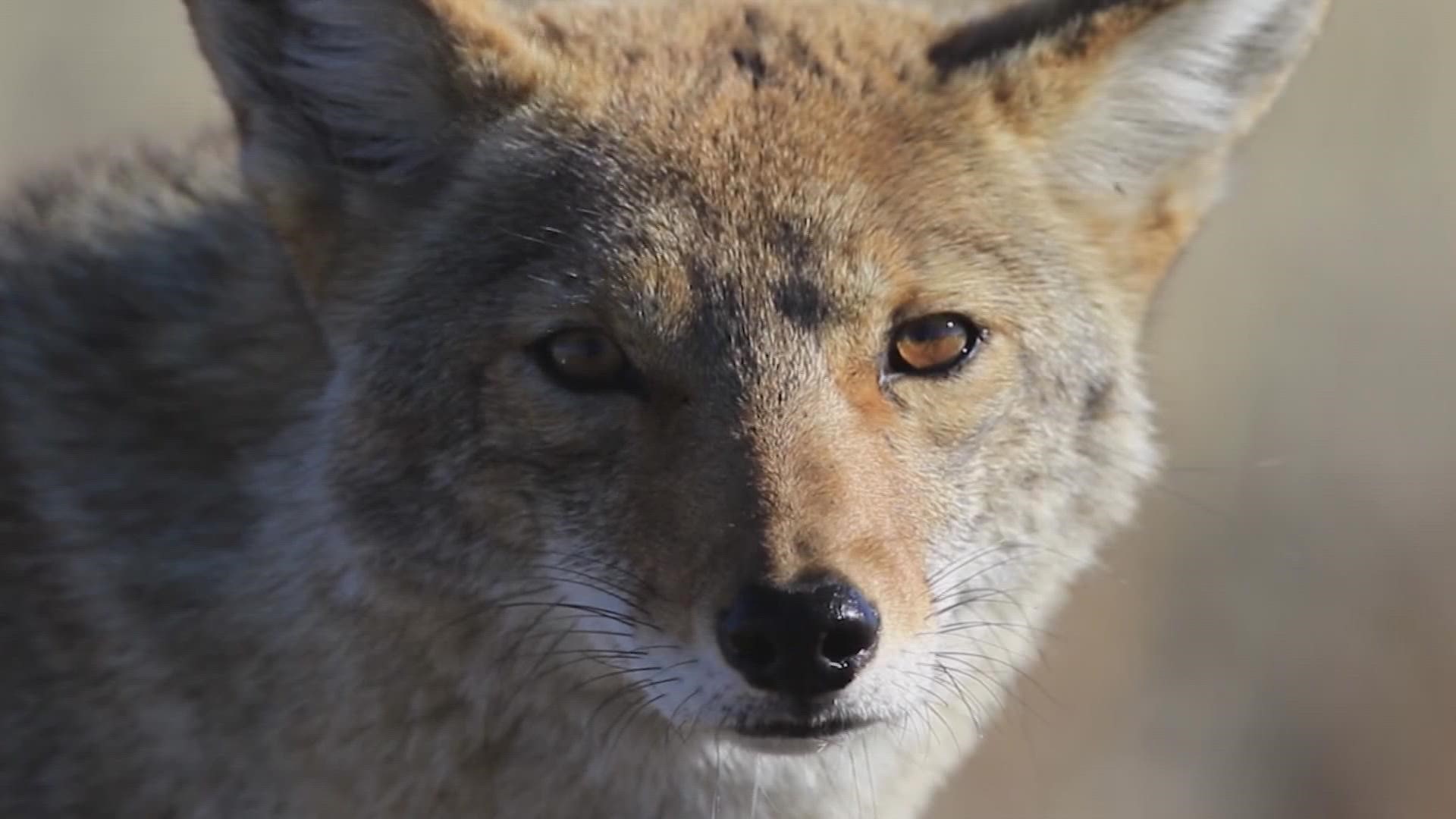DALLAS — Coyotes have a long-standing history in the state of Texas. A species that is native to prairie land now has healthy populations across the United States.
Coyotes are as elusive as they are mysterious, so any data on population numbers is hard to find.
Humans and coyotes have millions of interactions yearly but we're mostly reminded of them when there's an attack, like what happened to a 2-year-old in Dallas.
Sam Kieschnick, an urban biologist with Texas Parks and Wildlife, told WFAA that coyotes are some of the best at living on the margins, but in the region.
"I hear this a lot, 'We are replacing their homes.' I'd like to say that coyotes are adapting to ours," said Kieschnick.
Back in the day Texas had a number of apex predators: mountain lions, bears, wolves and coyotes. And when people settled here and development started many species were extirpated, leaving the resilient coyote to survive among us.
Kieschnick said that still doesn't mean coyotes are the top of the food chain in Texas. They are simply a prairie species that has adapted well.
The state does not track coyotes. But an app called iNaturalist does track sightings, and by the looks of dense plots points around D-FW, it has a healthy population.
Nationwide, only 23 states had coyotes before the 1900s. Now they're in every state but Hawaii.
"They're resilient, they are opportunistic, and almost perfectly adapted to living with us," he said.
Kieschnick took WFAA to a park in Grand Prairie, which has a greenbelt that runs alongside a creek. Coyotes use those greenbelts as corridors to move around.
Marcia Foster, formerly of Frisco, remembers taking an early morning jog with a friend when she was attacked.
"The coyote came from behind blindsided me from the back. I can't believe it's been four years," Foster said.
Foster has the scars to prove it. There are scars near both her calves. She says it took her a year to heal, and she had to have rabies shots and antibiotics long-term. Foster said she still doesn't run early mornings alone.
Kieschnick reminded residents that negative interactions are very rare, but are still scary.
In response to the attacks that have been highly publicized, he says, "This is an unhealthy coyote. This is a coyote that has been habituated. It's either been fed directly or indirectly."
The short answer is yes, we've encroached on coyote habitats. But instead of the species leaving or being eradicated, they've adapted to live among us.

